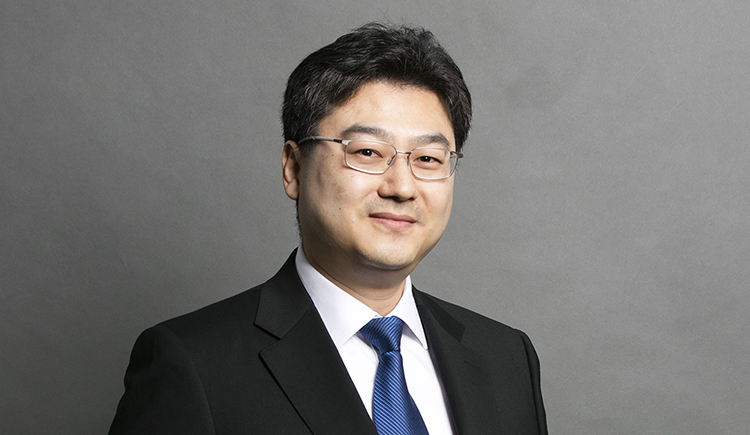Design update - China edges closer towards joining the Hague system
On 27th November 2020 the Chinese National Intellectual Property Administration (“CNIPA”) issued a “Proposed Amendment for the Implementing Regulations of Patent Law” (“Draft Regulations”) for public consultation. Amongst the proposals is a new Chapter XI titled “Special Provisions on International Application of Designs”, which the CNIPA marked as preparatory provisions for China’s participation in the Hague Agreement concerning international registration of industrial designs (“Hague Agreement”) at some time in the future. These Draft Regulations are a further step for China to join the international family of countries party to the Hague Agreement.
I. Background: Patent Law Amendment 2020
A few months earlier, in October 2020, the latest amendments to the Chinese Patent Law (“Patent Law Amendment 2020”) were passed and these will go into force on 1st June 2021. The Patent Law Amendment 2020 brought significant changes for industrial design protection in China, addressing some contradictions between the current Chinese Patent Law and the Hague Agreement so as to eliminate legislative obstacles for China to become a contracting state.
Major changes set out in the Patent Law Amendment 2020 concerning industrial design protection comprised the allowance for partial design protection (new article 2.4) and design domestic priority (article 29.2) in China, and the extension of design patent duration from the current 10 years to 15 years (article 42).
Considering also the recently-introduced deferred examination for industrial designs, the main legislative issues concerning industrial design protection in China have now been brought into line with the practice in the major patent offices internationally. We believe these changes are not only a preparation for the participation in the Hague Agreement, but also represent progress in the development and maturity of China’s industrial design protection regime.
II. Proposals in the Draft Regulations
Several key proposals are set out in Chapter XI of the Draft Regulations and they are as follows:
1. Applicable version of the Hague Agreement
Although there are other available versions of the Hague Agreement, including the Hague Act (1960), Chapter XI indicates that China is expected to be a contracting party of the Geneva version (1999) of the Hague Agreement. In order to participate in this international pathway for industrial design protection, an applicant must include China as a designated state in their application.
2. Filing office
The applicant may, at its option, either directly file the design international application with the International Bureau of the WIPO (“IB”) or through the CNIPA, which is consistent with Article 4 of the Hague Agreement. It is noted that filing through the CNIPA must comply with the prescribed conditions of CNIPA, in particular any substantive or formalities requirements, such as content in the design shall not be illegal, go against social ethics or harm public interest.
3. Determination of application date
Similar to the determination of the application date for invention and utility model via the PCT system, the application date of the design patent in China will be the same date as the Date of the International Registration in light of Article 10 of the Hague Agreement.
4. Examination
After the publication of the international design application by the IB, the CNIPA will conduct an examination on the design application, and notify the IB of the examination result. Please note that the international design applicant must use Chinese language to submit prescribed formalities before the CNIPA, and any foreign applicant without a regular residence or business presence within China has to engage a qualified patent attorney as their representative before the CNIPA in respect of their application.
5. Claim to priority
If the international publication by the IB indicates that a priority date is claimed, it is deemed as having met the written statement for claiming priority in China. However, a copy of the prior (first) patent application shall be submitted to the CNIPA within 2 months from the international publication date. If there is any inconsistency between the present applicant and the prior applicant, the present applicant must also submit relevant supporting documents to substantiate their entitlement to claim priority from the prior application.
6. Qualified grace period
A six-month grace period for novelty may also be applicable for an international application. If the applicant seeks to rely on the first publication in the qualified international exhibition or academic/technical conference, this fact has to be stated at the time of filing of the international design application, together with supporting documents within 2 months from the international publication date. There is no prescribed timeline for claiming this kind of grace period relying on the first publication for the purpose of public interest under a national emergency or extraordinary situation (a new type of grace period introduced in Patent Law Amendment 2020) or the disclosure by other person without authorization (i.e. in bad faith), but the CNIPA may require the applicant to provide supporting documents in a designated timeline.
7. Divisional application
Considering the potential different national practice in each jurisdiction regarding unity of invention, if one international design application contains two or more designs, the applicant is allowed to file divisional application(s) before the CNIPA within 2 months from the international publication date, subject to additional fees being payable. This provision is in line with Article 13 of the Hague Agreement.
8. Brief description
A prescribed brief description for any design application is required by the CNIPA. Nevertheless, the proposal confirms that if a brief description of the key design features is contained in the international publication, the prescribed brief description required by the CNIPA is deemed as having been met.
9. Granting
If the CNIPA does not identify any reason to refuse upon examination, it will grant an industrial design patent, notify the IB and publish the decision of grant. The design patent right will be effective upon the publication date by the CNIPA.
10. Change of right
If the applicant has performed any change of right, e.g. assignment, before the IB it needs to provide the relevant supporting document to the CNIPA for further handling.
III. Other proposals for design in Draft Regulations
Apart from the Hague Agreement related provisions, the Draft Patent Implementing Regulations also provide other notable proposals for some details of the newly introduced design aspects in Patent Law Amendment 2020, including:
1. Partial design patent application
Article 27 proposes that a view of the overall product shall be submitted for a partial design patent application, and a combination of broken lines and solid lines or other means shall be used to indicate the content to be protected. Article 28 further proposes that the part requested for protection shall be stated in the brief description, if necessary.
2. Domestic design priority
The proposals in Article 32 specify that the domestic priority for a design application may be claimed upon the same subject in (1) the drawings in a prior invention or utility model application, or (2) a prior design application, but it excludes that the subject in the prior application that has already claimed any priority, has been granted, or is a divisional application.
The basic rule is if the domestic priority is claimed, the prior application will be deemed as withdrawal, however, the proposal provides an exemption if the design application claims the domestic priority relying on a prior invention or utility model application.
IV. Conclusion
The above proposals in Draft Regulations takes China ever closer towards becoming a contracting party of the Hague Agreement. The change in formalities practice to allow broken or dotted lines to delineate scope of protection is a huge step change for the better, in the view of many practitioners and observers, and one of the current key practical drawbacks of the current Chinese industrial design filing practice. After joining the Hague system, Chinese companies will enjoy easier access to the protection of industrial designs in a global market context. On the other hand, foreign companies could also enjoy easier access to the protection of industrial designs in China by including China as a designated state in its international application. Even more, the Hague System may prove to be much more attractive to worldwide applicants once China becomes a member. With China becomes closer to the Hague Agreement, we would expect more details in the Patent Examination Guidelines regarding internationally design application to be proposed in the future.





